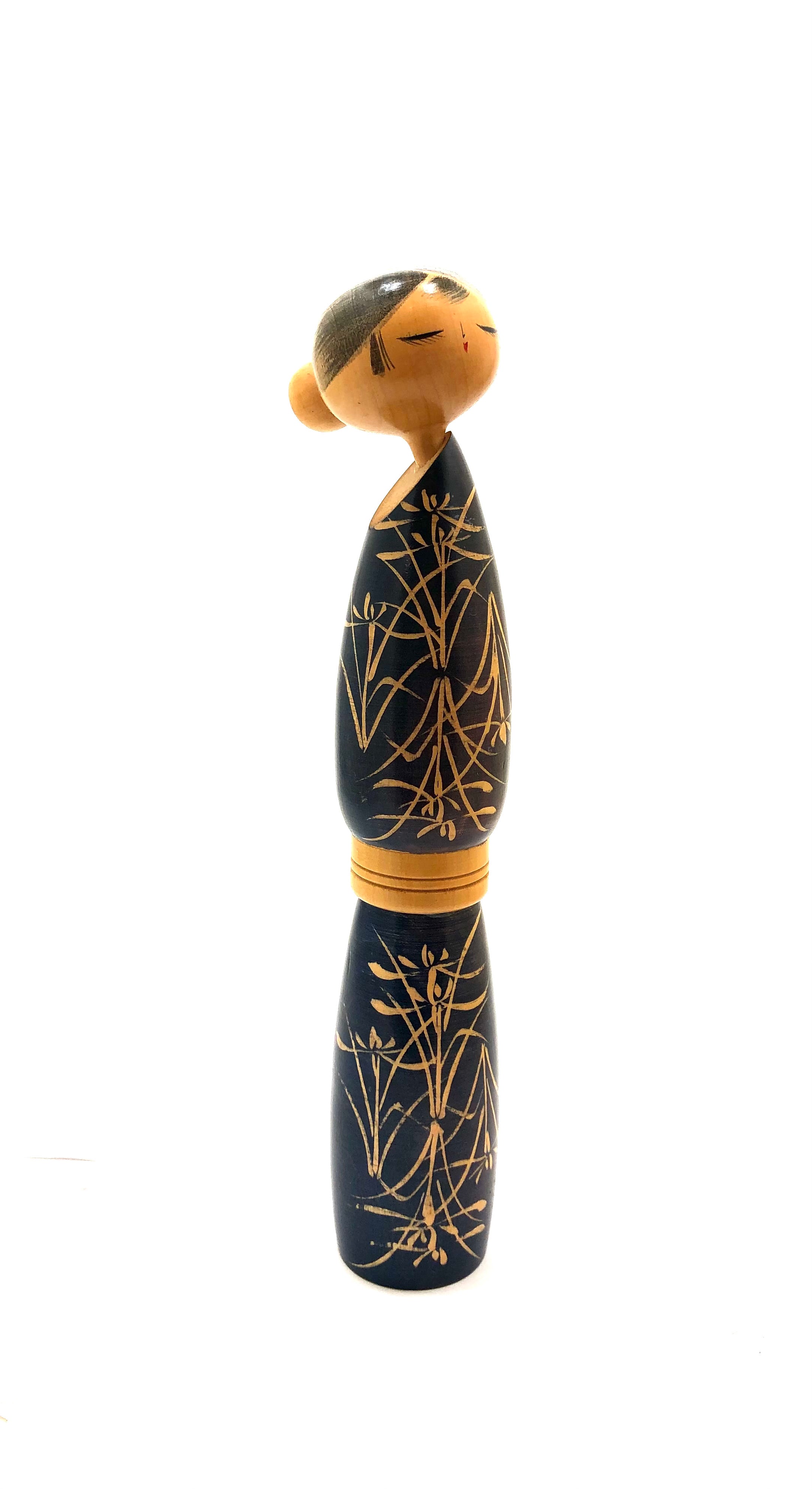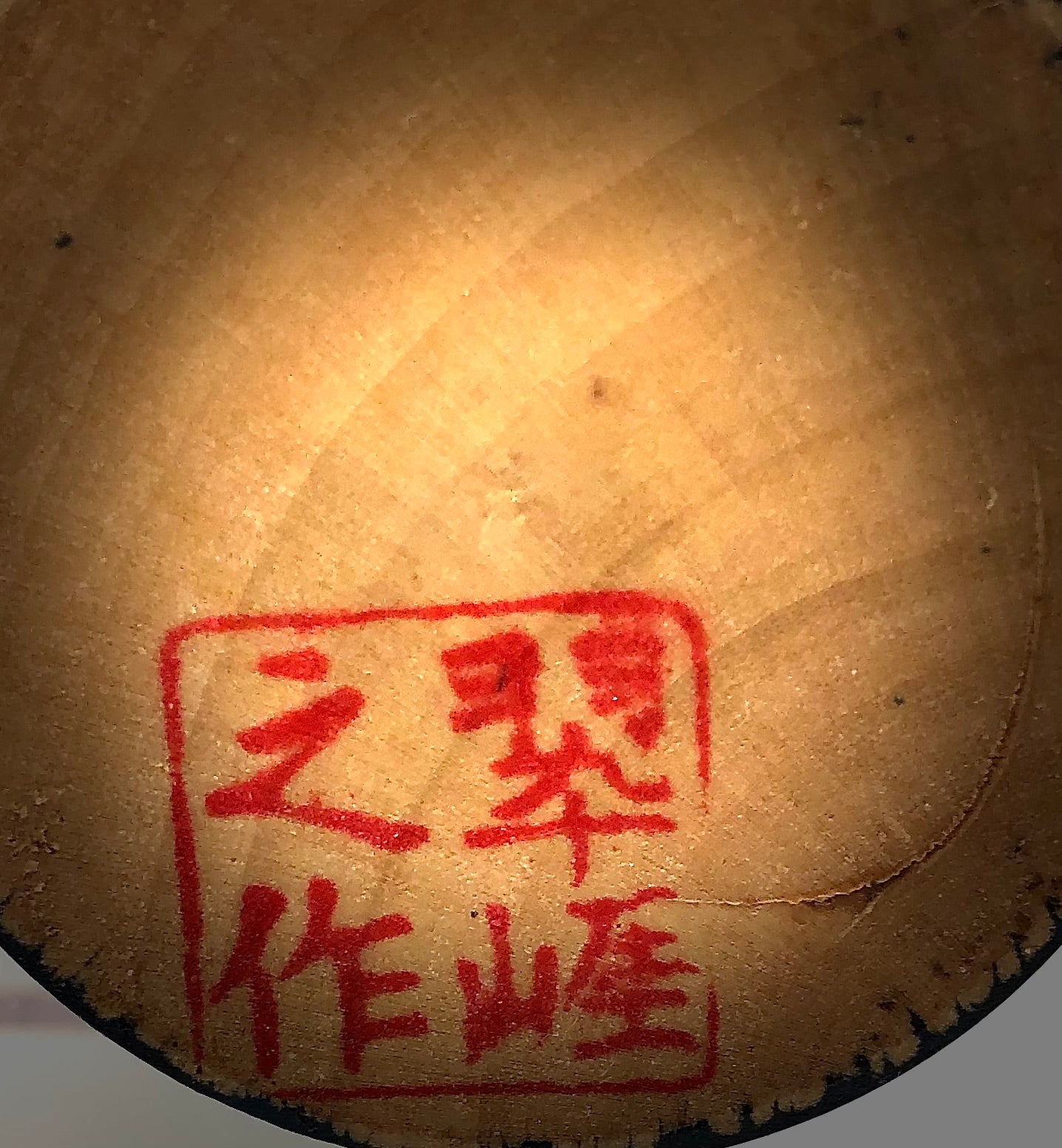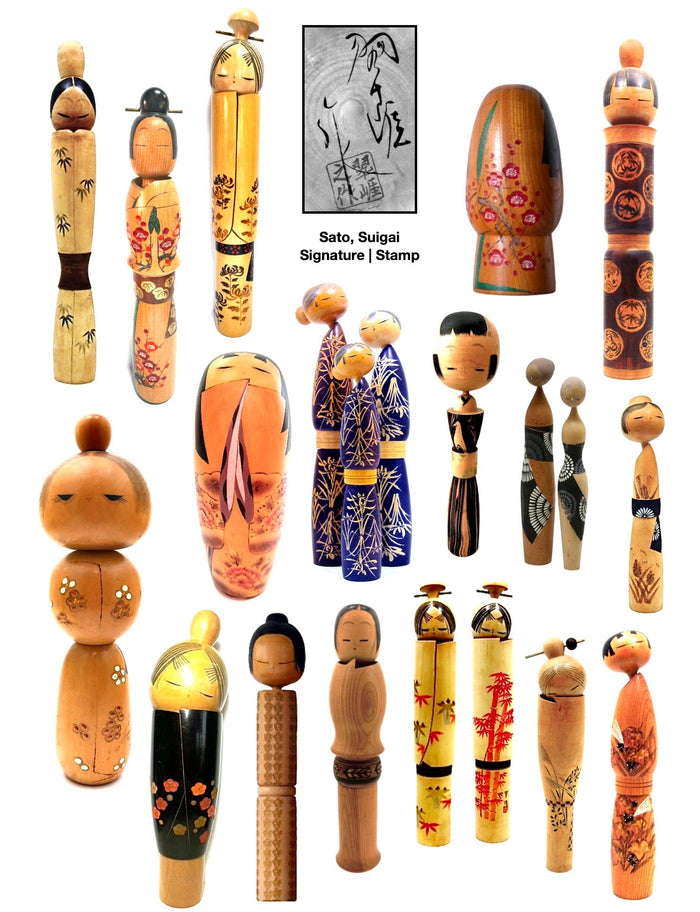

Japanese Creative Kokeshi | Semishigure “Cicada’s Song” by Sato, Suigai
Dimensions: 13-1/2”h
The Kokeshi being offered is a famous award-winning Kokeshi, by Sato, Suigai. What is unique to this doll is the unusual but traditional hairstyle with a bun on a beautifully tilted head, with unique eyelashes detailed on this expressive face. The body of the doll is filled with a summer grass motif with a tight and uncolored wood obi on a vivid blue Kimono. The motif represents ‘Stilt grass’, which is most commonly found in shady, moist areas of wetlands.
Condition: Excellent and commensurate with age with no fading of the painted motif. Wonderful workmanship, turning, and painted features.
NOTE: Sato-san, also known as Sadahachi, was born in Okubo, Yoshioka Village, Gunma Prefecture, to a family who owned a silk trading business. At the age of 18, he began his professional career as a painter under famous artist Komuro, Suiun, before pursuing a career in creative Kokeshi making in 1948. Sato-san also pursued careers in fashion design, engineering, and mechanics. His Kokeshi dolls have won many awards, including the Prime Minister’s Award in 1966. Sato-san’s artistry has been recognized by Japan’s Imperial Family, Crown Prince Akihito, (Now Emperor Akihito), the Minister of Economy and Trade, and the Minister of Agriculture and Forestry.

Artisan
Woodworker: Sato, Suigai
1920-
Biographical History:
Sato-san, named Sadahachi, was born in Okubo, Yoshioka Village, Gunma Prefecture, to a family who owned a silk trading business. At the age of 18, he began his professional career as a painter under the famous artist Komuro, Suiun, before pursuing a career in creative Kokeshi making in 1946. Sato-san also pursued careers in fashion design, engineering, and mechanics. In 1970, he was recognized for his wood crafting skills and named Holder of Excellent Technique. His Kokeshi dolls have won many awards, including the Prime Minister’s Award in 1966. In 1970, Sato-san’s artistry was recognized by Japan’s Imperial Family, Crown Prince Akihito, (Now Emperor Akihito), the Minister of Economy and Trade, and the Minister of Agriculture and Forestry. He is a member of the Cultural Properties Protections Committee of Hakone.
Collector's note – descriptive qualities, standard characteristics & ornamentation styles:
What is unique to this artist’s dolls is the unusual but traditional hairstyle, the wheat, summer grass, bamboo, (symbolizing prosperity, purity, and innocence), plum blossoms, and abstract leaves. In many instances, he utilizes an uncolored wood obi on both plain and vividly colored Kimono. He additionally incorporated ‘Stilt grass’, which is most commonly found in moist areas of wetlands. He also enjoyed representing ‘Kyoho budo’, (giant mountain grapes). Occasionally he incorporated pine, plum, and bamboo, referred to as “sho-chiku-bai”. Sato-san created many wonderful simple forms. Sato-san also created several large forms decorated with the family crests, (Mon) that are very tall, made in two separate sections from the same piece of wood, and joined with a connecting dowel. He regularly captures a peaceful nature in his doll's faces, complementing the serene nature that fills the countryside.
